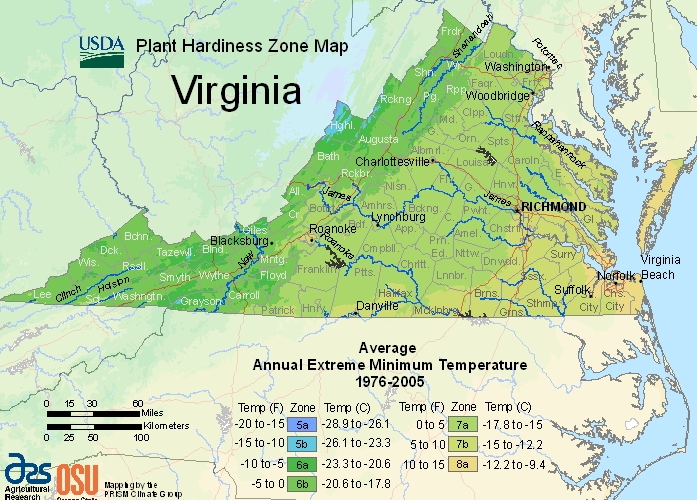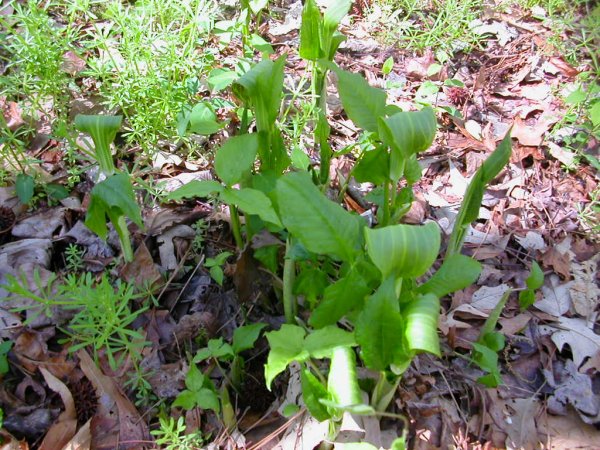
the average annual minimum winter temperature can be used as a guide for which plants will survive in different regions of Virginia
Source: US Department of Agriculture, 2023 USDA Plant Hardiness Zone Map

the average annual minimum winter temperature can be used as a guide for which plants will survive in different regions of Virginia
Source: US Department of Agriculture, 2023 USDA Plant Hardiness Zone Map
Plants adapted to the soil and climate of Virginia thrive. Species that require a longer growing season, or struggle to maintain minimum levels of moisture on hot August days, or are unable to cope with freezing temperatures, are less likely to be found in Virginia.
Certain species share similar requirements for soil, moisture, temperatire, and other growing conditions. Those plants tend to grow near each other, creating "communities" which can be classified by ecologists.
Such classifications help botanists and wildlife biologists choose where to search for rare species. The first ecologists in Virginia, the Paleo-Indians, must have used vegetation patterns to spot habitats where food could be hunted and gathered. Early European colonists looking for high-quality soils could recognize from the mixture of tree species where land could be cleared to grow better crops.


jack-in-the-pulpit at Jamestown Island